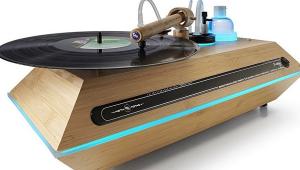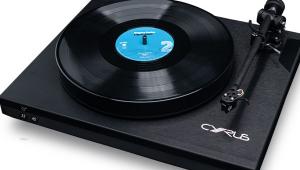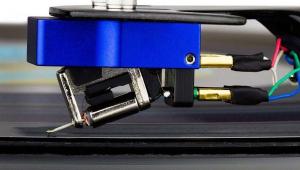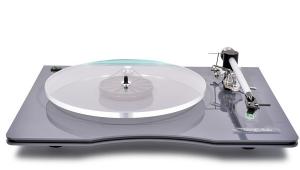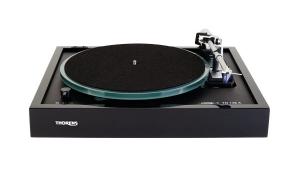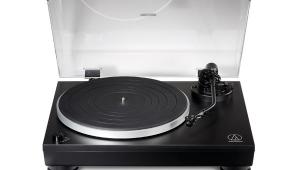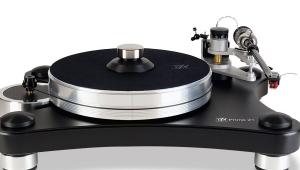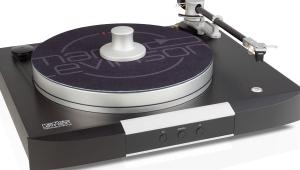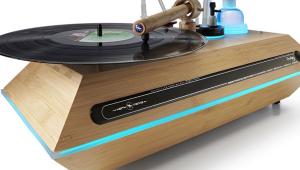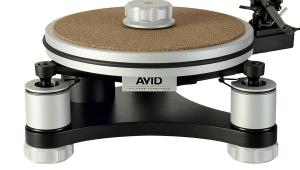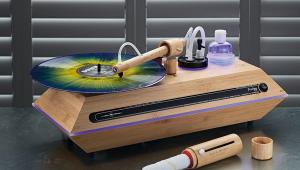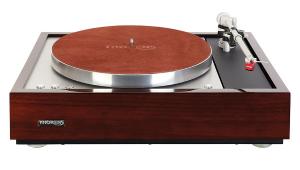Avid Ingenium turntable and arm - £825/£1,015
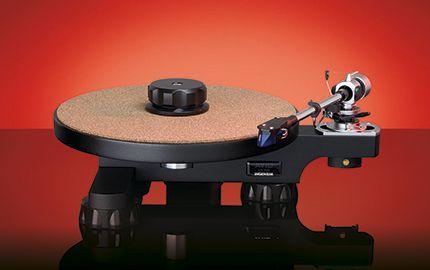

When a manufacturer hits on a design philosophy that works it shouldn’t be too surprising to find that it will use the same
basic pattern for as many products as it
can. However, in the case of Avid, this methodology is taken one stage further.
The company’s extensive range of turntables has all been designed ‘top down.’ The flagship Acutus turntable was developed first and every other turntable since is effectively as much of the Acutus as it is possible to retain at the new lower price point.
This has proved effective and means that Avid turntables have a strong family resemblance and a degree of ‘house sound.’ If you like what the Acutus does, the Diva – up until very recently the baby of the Avid range – will deliver much of the same characteristics at a more terrestrial level. The catch, or course, is that the Diva is effectively the lowest price that a turntable built on the principles of the Acutus can be produced. In the great scheme of things, the Diva is not hugely expensive, but it meant that Avid was missing out on the sub-£1,000 turntable market, until now that is...
Enter the Ingenium – the first Avid turntable to deviate from the tried and trusted Acutus pattern. The philosophies that mean that the Acutus looks and sounds the way that it does have not been abandoned altogether, though.
The design is intended to dissipate energy away from the playing surface via the bearing and nothing on the Ingenium is there for decoration, but the layout of the turntable is different to any other Avid that’s we’ve seen before. The chassis of the Ingenium takes the form of a two-piece cruciform with the longer section housing the bearing and tonearm mount and the shorter crossbeam adding stability. The motor is derived from the Diva and sits in free space behind the main chassis member.
The most visually distinctive aspect of the Ingenium’s design is the bearing. This is set forward from the centre of the chassis, which means that you can see the entire assembly rotate if you are seated in front of the turntable when it plays. It also means that the spine of the chassis retains more of its structural strength as it is complete across the rear of the unit.
There are some other rather neat touches too. The cork-topped platter used on other Avid turntables is retained and the feet add some useful isolation. The excellent Avid clamp is also an option.
As the main chassis member holds the bearing and the arm, the Ingenium differs from other Avid models in that you need to decide what arm mounting you want when you order it – all of the usual suspects are catered for and the review sample is fitted for and supplied with an SME cutout and arm (£1,015). This additionally has two knock-on effects that give the Avid a bit of clear space to rivals. The first is that the chassis can be ordered in a longer length allowing for the Ingenium to mount a 12in arm, which is something of an unusual option at this price. The second is that the chassis member can be extended in both directions and the Ingenium ordered to mount two arms, which is still fairly unusual at any price.
The Ingenium is free of adornments, but the finish is of an extremely high standard throughout. Everything feels extremely solid and very logically thought through. The skeletal design makes working on the deck very simple indeed and setup is extremely easy to carry out. There are a few minor detractors in comparison to some competitors at this price. The Ingenium has no cover as standard, although Avid produces a variety of options for an additional fee.
The other quirk is that the motor on/off switch is on the power cord and the chances are this will be dangling behind your stand or rack, which can make it difficult to reach. Speed change is done by moving the belt to a different pulley – this is not unusual on turntables that compete with the Ingenium, but it does require the platter to be removed in order to make it possible.
The motor itself is about the only vaguely complex part of the entire setup process on the Avid. It needs to be placed far enough from the chassis to allow for good belt tension or you can experience slight pitch instability on sustained notes. Provided this is done, the Ingenium is very speed stable indeed.
The simple act of supplying the Ingenium for review with a tonearm that costs more than the turntable does should be seen as a sign that the company has considerable faith in its new baby. If the SME M2-9 is a bit rich for your blood, you can order the Ingenium supplied with a Pro-Ject Carbon arm for £1,260 and some Rega arms will drop the price even further. If you can stretch to the SME, though, there is much to be said for this partnership.
Sound quality
With the winner of the recent cartridge group test (HFC September 2013), the Nagaoka MP150 attached – something the SME makes very simple – and connected to an Avid Ingenium phono stage, the turntable makes a very strong case for itself. In keeping with its bigger brothers, the Ingenium is not an intrinsically romantic sounding turntable. It is completely free of any softness or bloom and it is sufficiently revealing that it will show up the limitations on poor pressings. The rather better news is that with discs of any quality at all, the Avid is capable of a truly exceptional performance.
The most immediately arresting aspect of the presentation is the seamless integration from top to bottom that means you tend to sit back and enjoy the performance rather than spend time analysing particular facets of it.
With the sumptuous soundscape of the Hidden Orchestra’s Archipelago, the Avid produces a wonderfully full and inviting performance that effortlessly spreads and layers the performers in a tangibly real soundstage. There is an effortlessness to the way that the Ingenium performs that is very compelling.
There is a considerable sense of control to the performance, too. With the faster and more aggressively presented The Bones Of What You Believe by Chvches, the Avid gets on top of the rhythms and simply pounds along. After a considerable period experimenting with some of the more curious ends of my record collection, this turntable proves itself to be pretty much unflappable across the entire spectrum of music. The calm neutrality of the Avid is as happy with the pared-back simplicity of Fink as it is hammering through the pounding basslines of The Prodigy.
It takes a little while to realise that the Ingenium does something very unusual at the price. As reviewers we so often talk about the mighty soundstage of a Gyrodec or the legendary timing of the Linn LP12, ascribing character to the turntable itself. The Ingenium is by contrast almost entirely self-effacing. More than anything else, it is a platform for the arm and the cartridge that you choose to partner it with, rather than a part of the performance in itself. It is, in the best possible way a tool to aid your enjoyment of music rather than something that sets out to be the source of enjoyment itself.
This means that the character of the Avid is subtle to the point of reclusive. Having listened to a twin arm version with an SME on one side and Audio Note’s fabulous Arm III on the other, the Ingenium reveals a consistently detailed and agile bass response with commendable depth to low notes. By the same token, the ‘take no prisoners’ approach to poorer recordings seems to be in part down to the SME, but the Ingenium is not a deck that will flatter something that is compressed or hissy. That being said, the noise floor is impressively low and the excellent clamp makes short work of warped records.
The Avid is a subtly different proposition to some of the other turntables on offer at this price point, as the ease with which it accommodates an arm that costs more than the deck demonstrates.
Conclusion
The Ingenium is comparatively light on features and while I am rather fond of its appearance, which results from the triumph of function over form, there are undoubtedly prettier turntables on the market.
What the Ingenium can do, however, is very unusual at this relatively sane end of the market. This is an incredibly neutral, accurate and revealing turntable that allows any arm and cartridge connected to it to lead the performance, while the deck itself gets out of the way.
When you consider that the Ingenium allows for a very wide variety of arms to be attached, you have a turntable that has the potential to make a great many vinyl lovers very happy indeed.
LIKE: Assured confident and neutral performance; superb build quality
DISLIKE: Won’t flatter poor recordings; no cover; limited facilities
WE SAY: A hugely capable turntable that should shine with a variety of equipment
DETAILS
PRODUCT Avid Ingenium
ORIGIN UK
TYPE Turntable
WEIGHT 5.8kg
DIMENSIONS (WxHxD) 390 x 305 x 130mm
FEATURES
• Choice of arm mounts for 9in and 12in tonearms
• 33/45 RPM speeds available
• Supplied clamp
• Inverted stainless steel bearing
DISTRIBUTOR Avid HiFi
TELEPHONE 01480 869 900
WEBSITE avidhifi.co.uk
ISSUE 379
 |
Inside this month's issue:
Ruark R610 music system and Sabre-R standmount speakers, PMC twenty.23i Active, floorstanders, English Acoustics Downton preamplifier, Bluesound NODE ICON preamp/streamer, Ortofon Concorde Music Blue MM cartridge and much, much more
|



